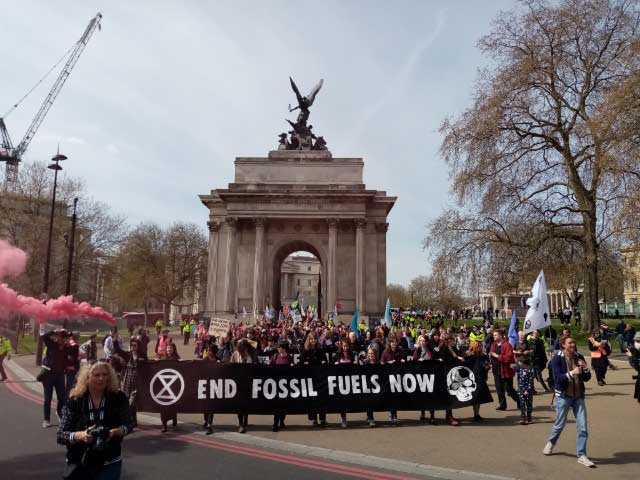Planning & Stewarding a March
Preparation
Strong preparation is absolutely key to pulling off an effective march. And the bigger the march will be, the more key preparation will be to success.
These are the elements you should consider when planning a march.
- What is the purpose of the march? This will help you plan the route, and decide what elements you want to include.
- Plan the route. Recce at similar time of day and day of the week as the march is planned to take place on. Take photos of junctions so that roadtake teams can plan. Consider alternatives in case you need to shorten or lengthen the route depending on numbers. In general we march in the same direction as traffic.
- Document the route - Google MyMaps is ideal as it allows a team to edit, add notes for stages and then share their final route plan.
- Notify the police: The law states 6 days in advance and you need to give name of organiser.
- Plan main banners, roadtake banners, other flags and visuals. Give as much notice as possible to the creative teams if new banners are required.
- Will Rhythms (samba) or other bands be involved, do they have enough notice?
- Where will the march assemble? Large open spaces are best as they allows crowds to assemble easily in sequence.
- How will the march disperse at the end of the route, or is there another event following the march, that takes place at a specific time?
Media & Messaging
- How will the march be publicised?
- Create visuals and copy for broadcast channels, Facebook, press releases etc.
Roles Involved
Not every march will have all of these and som eof them may be combined
The day of the March
- Recce the route again. Roadworks or other unplanned barriers have been known to occur overnight.
- Check you have all the expected banners/flags/etc.
- Ensure you have enough people recruited for roadtaking, and that they are trained and confident? If they need a quick recap, make sure this happens.
- Ensure Stewards present and briefed on the march route.
- Assuming the march is pre-liased, have Protest Liasion connecte dto Police Liasion?
Starting the March
- Assemble the march block(s)
- Front March Leader / Point Steward (who will be walking backwards)
- Empty space (area kept clear for photographers to get clear shots of front banner)
- Main Banner
- Slowest marchers (if not at rear)
- Body of march
- Samba
- Body of march
- Samba
- Tail of March
- When march coordinator is happy, signal is given to start
Progressing the March
- March Speed / Gaps
- Gaps are inevitable, you just want to avoid them getting too big as traffic will then try and get through.
- Stopping and restarting a march is difficult, better to slow the front right down to wait for gaps to close.
- Communications from stewards along the march length is critical to judge appropriate march speed - slower is better.
- To communicate with Rhythms/Samba contact them via the Samba Shepherd (with a lamb on a stick), or speak to the whistler's supporter (usually walking backwards alongside the whistler)
- Roadtaking
- Explain process
- Explain process
- Speeches enroute
- Avoid if at all possible as people will stop to listen and this will create gaps.
- One solution is to pause the whole march but only a small section near the PA will be able to hear any speeches.
Typical Issues
LIst them here
Checklist
Photos of Marches
Add some examples here.

Signup to be a Steward on XR Action Network

